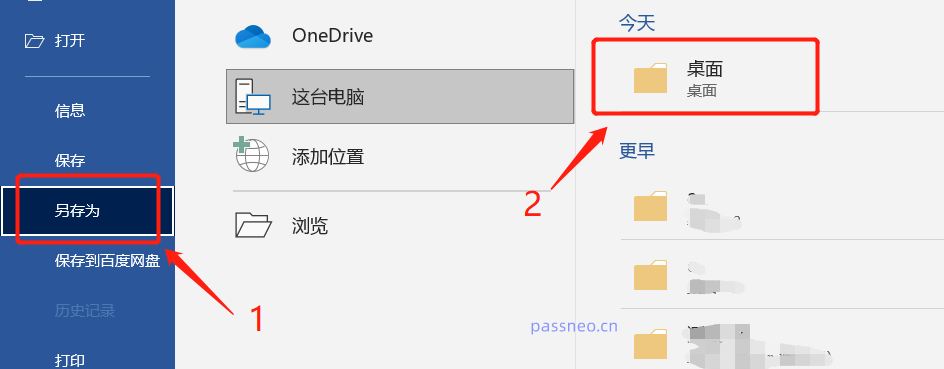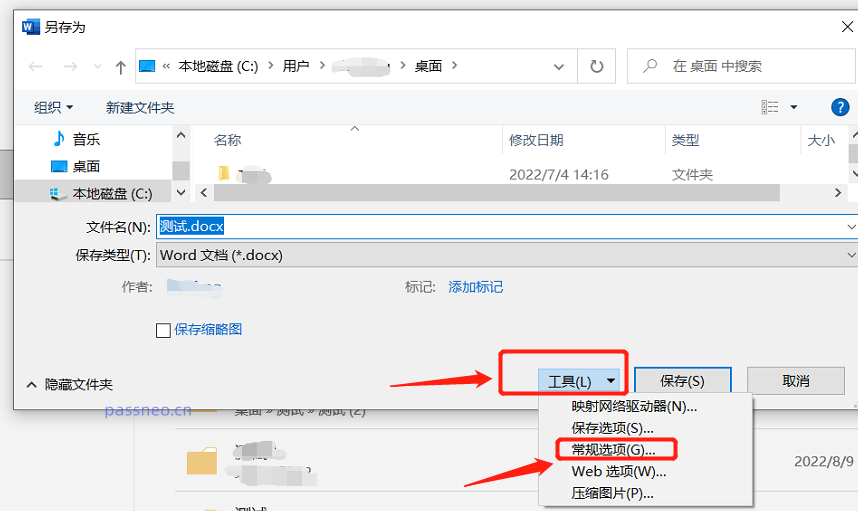How to edit a Word document in 'read-only mode'?
Problem: The Word document cannot be edited after it is opened in "read-only mode". How to solve it? Brief description: There are two "read-only modes" for Word documents. They have different effects on document editing and need to be processed separately. Guided reading: The following content will introduce these two "read-only methods" and their corresponding solutions in detail to help you restore the editable state of the document. Read on to learn the steps and how to do it. It is compiled for you by PHP editor Youzi.
Method 1: Read-only method without password
When a Word document is set to "read-only mode" without password, you will see a window prompting "Do you want to open it in read-only mode" after opening the document.
If you select "No", you can open the Word document directly, and you can edit and save the document normally.
If you select "Yes", you can also open the Word document directly and make edit changes, but the modified document cannot be saved.

When saving the document, the system will pop up a window stating that the read-only file cannot be saved.
If you need to save the document, you can save the document as a file, then modify the file name, or change the save path to make it a new document.

Of course, we can also disable the "read-only mode" before editing the Word document, and then we can continue to edit normally.
First, after opening the Word document, select "No" in the window that prompts "Do you want to open it in read-only mode?", then click the menu tab [File], and then click [Information]-[Protect Document]-[ Always open in read-only mode], and finally save the document to release the "read-only mode".

Method 2: "Read-only mode" with password
When a Word document is set to "read-only mode" with a password, you will see a window prompting "Enter password" after opening the document.
If you select "Read Only", you can open the Word document directly and make edit changes, but the modified document cannot be saved. If you want to save, you also need to save the document as a new document, that is, change the file name or save path into a new document.
If you want to save the document directly after editing and modification, you need to enter the originally set password in the password field, and then click [OK] to open the Word document.

We can also disable the "read-only mode" with password before editing the Word document, and then we can continue to edit normally.
First, after opening the Word document, enter the password to open the normal editing mode, then click the menu tab [File], and then click [Save As].

After the [Save As] window pops up, click [General Options] in the [Tools] drop-down list.

After the [General Options] window pops up, you can see that there is already a password in the [Password when modifying file] column. This is the originally set "read-only mode" password. Select and delete the password, and then save the document. "Read-only mode" can be released.

We can also use other tools to remove the "read-only mode" of Word documents.
For example, Pepsi Niu Word Password Recovery Tool can not only directly remove the "read-only mode" of Word documents, but also can remove the "restricted editing" password of Word documents.
Select the [Unrestriction] module in the tool, and then import the Word document.

The above is the detailed content of How to edit a Word document in 'read-only mode'?. For more information, please follow other related articles on the PHP Chinese website!

Hot AI Tools

Undresser.AI Undress
AI-powered app for creating realistic nude photos

AI Clothes Remover
Online AI tool for removing clothes from photos.

Undress AI Tool
Undress images for free

Clothoff.io
AI clothes remover

Video Face Swap
Swap faces in any video effortlessly with our completely free AI face swap tool!

Hot Article

Hot Tools

Notepad++7.3.1
Easy-to-use and free code editor

SublimeText3 Chinese version
Chinese version, very easy to use

Zend Studio 13.0.1
Powerful PHP integrated development environment

Dreamweaver CS6
Visual web development tools

SublimeText3 Mac version
God-level code editing software (SublimeText3)

Hot Topics
 1663
1663
 14
14
 1420
1420
 52
52
 1315
1315
 25
25
 1266
1266
 29
29
 1239
1239
 24
24
 If You Don't Rename Tables in Excel, Today's the Day to Start
Apr 15, 2025 am 12:58 AM
If You Don't Rename Tables in Excel, Today's the Day to Start
Apr 15, 2025 am 12:58 AM
Quick link Why should tables be named in Excel How to name a table in Excel Excel table naming rules and techniques By default, tables in Excel are named Table1, Table2, Table3, and so on. However, you don't have to stick to these tags. In fact, it would be better if you don't! In this quick guide, I will explain why you should always rename tables in Excel and show you how to do this. Why should tables be named in Excel While it may take some time to develop the habit of naming tables in Excel (if you don't usually do this), the following reasons illustrate today
 How to change Excel table styles and remove table formatting
Apr 19, 2025 am 11:45 AM
How to change Excel table styles and remove table formatting
Apr 19, 2025 am 11:45 AM
This tutorial shows you how to quickly apply, modify, and remove Excel table styles while preserving all table functionalities. Want to make your Excel tables look exactly how you want? Read on! After creating an Excel table, the first step is usual
 You Need to Know What the Hash Sign Does in Excel Formulas
Apr 08, 2025 am 12:55 AM
You Need to Know What the Hash Sign Does in Excel Formulas
Apr 08, 2025 am 12:55 AM
Excel Overflow Range Operator (#) enables formulas to be automatically adjusted to accommodate changes in overflow range size. This feature is only available for Microsoft 365 Excel for Windows or Mac. Common functions such as UNIQUE, COUNTIF, and SORTBY can be used in conjunction with overflow range operators to generate dynamic sortable lists. The pound sign (#) in the Excel formula is also called the overflow range operator, which instructs the program to consider all results in the overflow range. Therefore, even if the overflow range increases or decreases, the formula containing # will automatically reflect this change. How to list and sort unique values in Microsoft Excel
 How to Format a Spilled Array in Excel
Apr 10, 2025 pm 12:01 PM
How to Format a Spilled Array in Excel
Apr 10, 2025 pm 12:01 PM
Use formula conditional formatting to handle overflow arrays in Excel Direct formatting of overflow arrays in Excel can cause problems, especially when the data shape or size changes. Formula-based conditional formatting rules allow automatic formatting to be adjusted when data parameters change. Adding a dollar sign ($) before a column reference applies a rule to all rows in the data. In Excel, you can apply direct formatting to the values or background of a cell to make the spreadsheet easier to read. However, when an Excel formula returns a set of values (called overflow arrays), applying direct formatting will cause problems if the size or shape of the data changes. Suppose you have this spreadsheet with overflow results from the PIVOTBY formula,
 Excel MATCH function with formula examples
Apr 15, 2025 am 11:21 AM
Excel MATCH function with formula examples
Apr 15, 2025 am 11:21 AM
This tutorial explains how to use MATCH function in Excel with formula examples. It also shows how to improve your lookup formulas by a making dynamic formula with VLOOKUP and MATCH. In Microsoft Excel, there are many different lookup/ref
 Excel: Compare strings in two cells for matches (case-insensitive or exact)
Apr 16, 2025 am 11:26 AM
Excel: Compare strings in two cells for matches (case-insensitive or exact)
Apr 16, 2025 am 11:26 AM
The tutorial shows how to compare text strings in Excel for case-insensitive and exact match. You will learn a number of formulas to compare two cells by their values, string length, or the number of occurrences of a specific character, a
 How to Make Your Excel Spreadsheet Accessible to All
Apr 18, 2025 am 01:06 AM
How to Make Your Excel Spreadsheet Accessible to All
Apr 18, 2025 am 01:06 AM
Improve the accessibility of Excel tables: A practical guide When creating a Microsoft Excel workbook, be sure to take the necessary steps to make sure everyone has access to it, especially if you plan to share the workbook with others. This guide will share some practical tips to help you achieve this. Use a descriptive worksheet name One way to improve accessibility of Excel workbooks is to change the name of the worksheet. By default, Excel worksheets are named Sheet1, Sheet2, Sheet3, etc. This non-descriptive numbering system will continue when you click " " to add a new worksheet. There are multiple benefits to changing the worksheet name to make it more accurate to describe the worksheet content: carry





